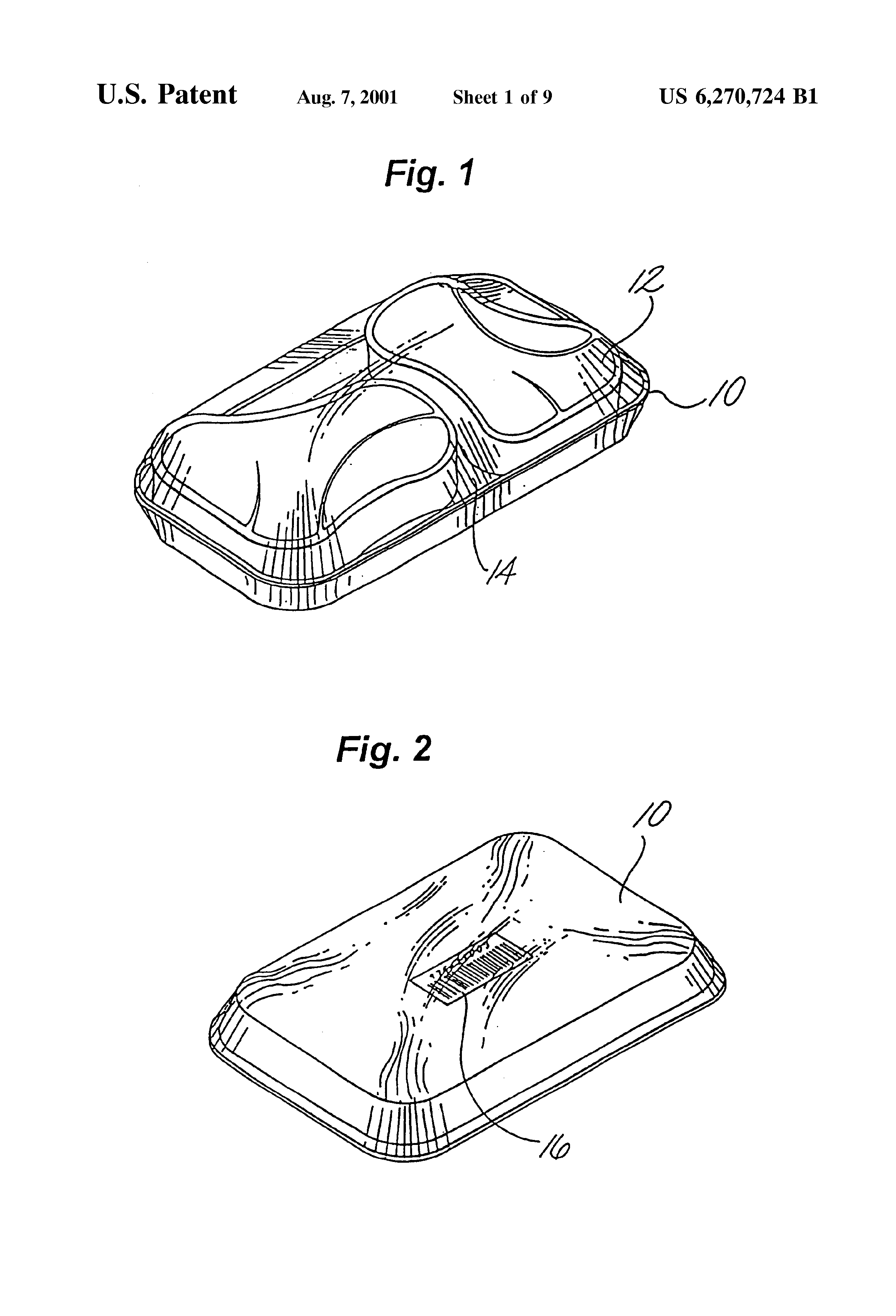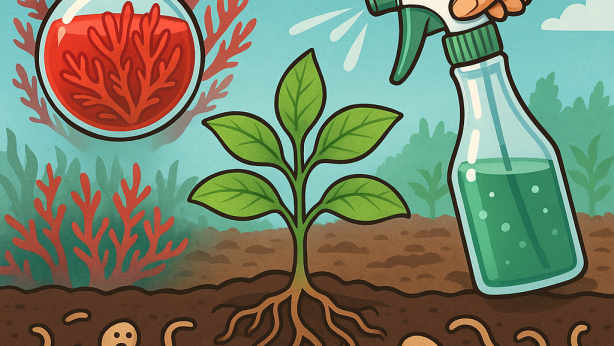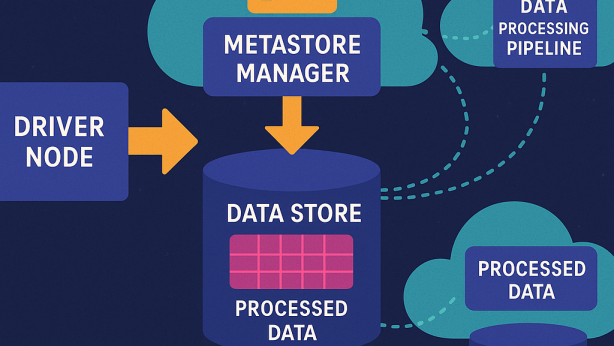Invention for Detection and identification of contaminants in foods

Invented by James G. Woodaman, SIRA TECHNOLOGIES Inc
Contaminants in food can be of various types, including chemical, physical, and biological. Chemical contaminants can be pesticides, heavy metals, or food additives, while physical contaminants can be glass, metal, or plastic pieces. Biological contaminants can be bacteria, viruses, or parasites.
The detection and identification of contaminants in food involve various techniques and technologies, including chromatography, spectroscopy, immunoassays, and DNA-based methods. These methods are used to detect and quantify the presence of contaminants in food samples.
The global market for detection and identification of contaminants in foods is expected to grow at a CAGR of 7.8% from 2020 to 2025. The market is driven by factors such as the increasing demand for food safety and quality, the growing incidence of foodborne illnesses, and the stringent regulations imposed by the government on food safety.
The market is segmented based on the type of contaminant, technology, and geography. Based on the type of contaminant, the market is segmented into chemical, physical, and biological contaminants. Based on technology, the market is segmented into chromatography, spectroscopy, immunoassays, and DNA-based methods.
North America dominates the market for detection and identification of contaminants in foods, followed by Europe and Asia-Pacific. The Asia-Pacific region is expected to grow at the highest CAGR during the forecast period due to the increasing demand for food safety and quality in the region.
The major players in the market for detection and identification of contaminants in foods include Thermo Fisher Scientific, Inc., Agilent Technologies, Inc., PerkinElmer, Inc., Shimadzu Corporation, and Waters Corporation.
In conclusion, the market for detection and identification of contaminants in foods is growing rapidly due to the increasing demand for food safety and quality. The market is driven by various factors such as the growing incidence of foodborne illnesses and stringent regulations imposed by the government on food safety. The market is expected to grow at a significant rate during the forecast period, and the major players in the market are Thermo Fisher Scientific, Inc., Agilent Technologies, Inc., PerkinElmer, Inc., Shimadzu Corporation, and Waters Corporation.

The SIRA TECHNOLOGIES Inc invention works as follows
The present invention relates a food contamination tester associated with a two-bar code, given trademark GILBAR. The owner of the invention has developed a coded indicator that can be used to detect microbial contamination, such as toxic contaminants, bacterial metabolic products, or other microbial secrets. The first bar code symbol associated with the food contaminants detector identifies a food product based on the type, quantity, price, and other factors, while the second bar codes symbol is used to detect contamination. The first barcode symbol can be scanned when contamination is not detected. However, the second barcode symbol cannot. When contamination is detected, the bars of both bar codes symbols can appear and disappear. This causes the first barcode symbol to be unreadable by scanners while the second barcode symbol becomes scanner-readable.

Background for Detection and identification of contaminants in foods
Over the last few years, there has been an increasing concern about the safety of the food supply. Food contamination can be caused by a number of different sources, and it is dependent on the particular food.
Most animal-derived foods, like raw meat, can be contaminated before, during or after processing. Contamination can occur from contact with feces at the slaughterhouse, by food handlers at any stage of processing, or from toxins in the environment. Most of the time, the contamination is minimal and does not pose a threat to consumers if they prepare the food properly. While the level of contamination is low (i.e. few bacteria per grain of food), if food is not properly stored or is stored for a long period of time, contaminants such as bacteria can grow and become a threat to the consumer. “Even if food products are in a good condition when they reach the market, the subsequent treatment of the food by the consumer can lead to serious contamination.
Inadequate temperature control throughout the cold chain is a common cause of poor storage conditions. The cold chain is a method of distributing perishable food from the wholesaler to the retailer and finally to the consumer. The cold chain is the process of transporting food in a refrigerated vehicle from the producer to the wholesaler and the subsequent storage, handling and distribution. When food is stored above the optimal temperature for storage, it can be a sign of inadequate temperature management. This can happen at any stage in the distribution process.
This time-temperature abuse often leads to a significant microbial growth, and the production of toxins by microorganisms that are introduced from different sources of contamination. If food is subjected to temperature abuse, bacteria and other pathogens can flourish to dangerous levels. Foods contaminated with bacteria produce volatile gases and off-odors, including carbon dioxide, sulfur dioxide and hydrogen gas. They also produce organic acids, nitrites, and other organic acids. In addition, some bacteria, like lactic acid bacteria can cause the pH to decrease, which will encourage further bacterial growth. Some bacteria can produce toxins that are often linked to food-borne illness. Foods with volatile gases, off-odors and toxins are indicative of bacterial contamination. These contamination-indicating conditions are often referred to as bacterial metabolites as they are the products and by-products of bacterial metabolism.
The growing concern about food supply is due to a number of factors and incidents. “These include:
raw chicken products and eggs have been found contaminated with Salmonella, and inadequate cooking has resulted in serious illness or even death for those who consumed these products.
Listeria contamination of milk products that were not adequately pasteurized has led to severe illness or death in consumers.
A highly toxic strain E. coli caused the deaths of several people after they consumed beef products which were not properly cooked.
A number of toxins such as ciguatoxins that contaminate the fish are known.” The toxins in fish are not destroyed or inactivated by cooking, so they pose a risk to anyone who consumes the product.
shellfish, such as oysters concentrate any contaminants in the water they grow in and, because they are often eaten raw, they pose a health threat to consumers.

Fish is being eaten more raw, which increases the risk of waterborne contamination causing illness.
Visual inspection and smell are the only ways that a consumer can determine if food purchased is contaminated. The methods used to detect contamination are often inadequate.
There is an urgent need for a reliable method to determine if the food purchased by a customer is safe for consumption. This solution should be inexpensive and detect many agents that can cause illness. It should be easy to read. It should also be easy to?read?
The present invention relates a detection system, and more preferably a food contamination sensor associated with a two-bar code. Given the trademark GILBAR. The owner of the invention has developed a coded indicator that is used to identify contaminated foods. The first bar code symbol associated with the food contaminants detector identifies a food product based on the type, quantity, price, etc., while the other bar code symbol identifies contamination. The first barcode symbol is readable by scanners when contamination is not detected. However, the second barcode symbol is not readable. When contamination is detected, both barcode symbols may have bars that appear or disappear, causing the first symbol to become unreadable by scanners and the second symbol to become readable.
The indicator can be changed to show that the food has been contaminated when a bacterial metabolite or toxin or secretion or another contamination condition such as temperature abuse is present in vapors, gasses or juices. In one embodiment, the labeled anti-body that is used to change the appearance of the marker dissociates itself from the substrate when a bacterial toxin or metabolite or secretion (or other contamination condition) is present. In another embodiment, a labeled anti-body that binds the substrate when a bacterial toxin or metabolite is present. In another embodiment, the change in the appearance of the indicator is a result of a change to a bar-code symbol, other coded words or symbols, or any other indicia. The bar code indicia may appear or disappear depending on the change in bar code symbol.
Other substances can be used instead of labeled antigens to change the appearance of the indicators. You can use a deoxyribonucleic (DNA) or a nucleic (RNA) acid probe that is directed at the nucleotide of the toxin or the nucleotide of the microorganism itself. Or, you can use a probe that is directed at the nucleotide of the antigen secreted by contaminating bacteria.
In a second embodiment, the time-temperature indicators may be used to detect bacterial metabolites resulting from the temperature abuse of food products. It is common knowledge that time-temperature indicator can be used to detect temperature abuse in food products in terms of bacterial proliferation. A time-temperature indication uses enzymatic color markers to indicate the temperature exposure as indicated by the pH difference from a baseline. (See Blixt et. al., An enzymatic time/temperature device for monitoring the handling of perishable commodities, Dev. Biol. Stand., 36:237-21 (1976), which has been incorporated as if it were fully stated herein.
In a further embodiment, the sensor for volatile gases, such as ammonia and organic acids in addition to carbon dioxide and hydrogen gas can be used.
In one embodiment, the substrate and means for changing appearance of indicator may be placed at the top of food packaging. This allows gases and vapors rise to the surface and contact the means for altering appearance of indicator. In an alternative embodiment, liquids and juices from food can be transported up by capillary action in order to contact the means for changing appearance of the indicators. In another embodiment, juices, gases and vapors can collect at the bottom part of the detector where they are in contact with the mechanism for changing the appearance. The GILBAR or double bar code system? The double bar code system or GILBAR?
Click here to view the patent on Google Patents.


